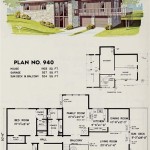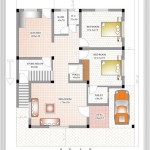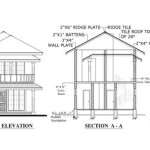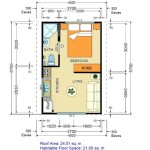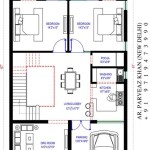Early American House Plans: A Timeless Legacy
Early American homes, characterized by their harmonious blend of simplicity, functionality, and aesthetic charm, continue to captivate homeowners and architects alike. These architectural gems, rooted in the 17th to 19th centuries, offer a rich heritage that inspires modern design.
Saltbox Houses: A Versatile Vernacular
Saltbox houses, ubiquitous in New England, are renowned for their distinctive asymmetrical rooflines, with one side sloping gently to the ground, resembling a saltbox. These houses were typically constructed of wood and featured a central chimney, a large central living space, and smaller rooms on either end. Their practicality and adaptability made them ideal for families of various sizes.
Cape Cod Cottages: Simplicity and Charm
Cape Cod cottages, originating on the Massachusetts peninsula, exude an aura of coziness and simplicity. Typically one to one and a half stories high, they feature a central chimney, symmetrical windows, and a shallow, pitched roof. Their compact size and efficient use of space made them popular among seafaring communities.
Georgian Mansions: Opulence and Symmetry
Georgian mansions, inspired by British architecture, epitomize elegance and grandeur. They are typically two to three stories tall with symmetrical facades, adorned with decorative elements such as pediments, quoins, and pilasters. The interiors boast spacious rooms, high ceilings, and finely crafted moldings.
Federal Style: A Classical Influence
Federal-style houses, prevalent from the late 18th to early 19th centuries, reflect the influence of classical architecture. They feature rectangular shapes, symmetrical facades, and a pediment over the main entrance. The interiors are characterized by delicate moldings, elaborate mantels, and large windows.
Greek Revival: Monumental Aspirations
Greek Revival houses, popular in the 1830s and 1840s, drew inspiration from ancient Greek temples. They are distinguished by their columned porticoes, pedimented gables, and symmetrical facades. The interiors feature grand staircases, high ceilings, and decorative plasterwork.
Gothic Revival: A Romantic Interlude
Gothic Revival houses, a product of the 19th century, embrace the aesthetics of medieval architecture. They feature pointed arches, steeply pitched roofs, and intricate tracery. The interiors are characterized by vaulted ceilings, stained glass windows, and decorative woodwork.
Essential Elements of Early American House Plans
- Central chimneys for heat distribution
- Wood construction for durability and insulation
- Simple, functional floor plans designed for practicality
- Asymmetrical or symmetrical facades depending on the architectural style
- Decorative elements reflecting the aesthetic sensibilities of the era
Conclusion
Early American house plans continue to enchant us with their timeless beauty, functionality, and rich historical significance. From the humble saltbox to the opulent Georgian mansion, these architectural masterpieces serve as a testament to the ingenuity and artistry of our ancestors. Incorporating elements from these classic designs into modern homes can evoke a sense of history, charm, and enduring style.

House Plan The Charm Of Early American Ladies Home Journal Design No 388 1935 Typical Eastern Pennsyl Stone Plans Vintage

1903 Radford American Home No 574 House Plans How To Plan Vintage

Floor Plan Prints Early American Colonial Home Plans Design No House Vintage

Early American House Floor Plans Historic Homes Brand

Distinctive House Plans Colonial Early American Traditional Style Plan 4 Beds 2 Floor Design

Early American Plan 1 938 Square Feet 4 Bedrooms 3 Bathrooms 286 00043

Home Plans Ser 3a Colonial Houses 175 Early American Designs By Planners 281998 2c Trade Paperback 29 For

100 American House Plans Blue Prints Floor Elevations

Plan 2113 Colonial

Vintage House Plans Early Colonial

